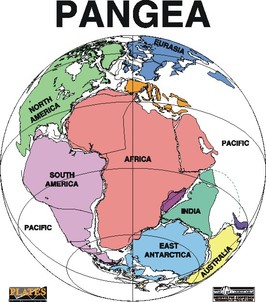Over a month of study, the team examined the formation up close through a series of dives in a three-person submersible craft to as far down as 21,000 feet below the surface. It was on these dives that the team noticed that the rock’s composite minerals included granite, iron, and cobalt, none of which were present in the surrounding seabed. The granite was a particularly noteworthy find, since this rock usually only appears on land. The researchers drilled into the rock and extracted a few samples, which they brought up to the surface and subjected to deeper chemical analyses. They now hypothesize that the rock may have been an island that existed alongside Pangea until 100 million years ago, when the land masses that would become South America and Africa started breaking off of the supercontinent. The island may have gotten caught in between these fissures and pulverized into the ocean floor.
Roberto Ventura Santos, director of the Brazilian Geological Survey, and other observers have already dubbed this theoretical island “Brazil’s Atlantis,” in allusion to the island of ancient Greek lore. However, this real-life island would presumably have disappeared beneath the waves millions of years before there were any Greeks—or any humans, for that matter—around to see it and write tributes to it. No one expects to find any ancient cities within this granite, but Santos does suggest that the rock’s discovery may have significant implications for our understanding of the formation of the continents and the evolution of Earth’s crust. The team is now gathering samples of rock previously found in other portions of the southern Atlantic for cross-comparisons. It expects to return to the Rio Grande Elevation and conduct further drilling along the site later this year.
–Science Recorder

 RSS Feed
RSS Feed